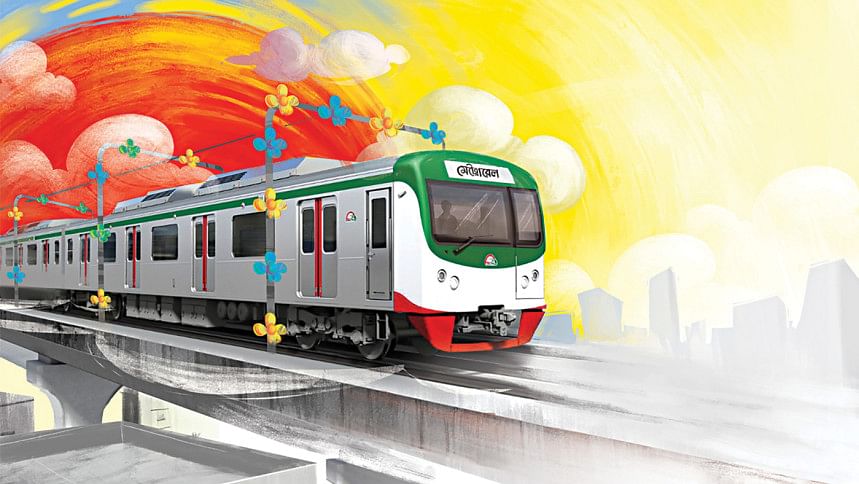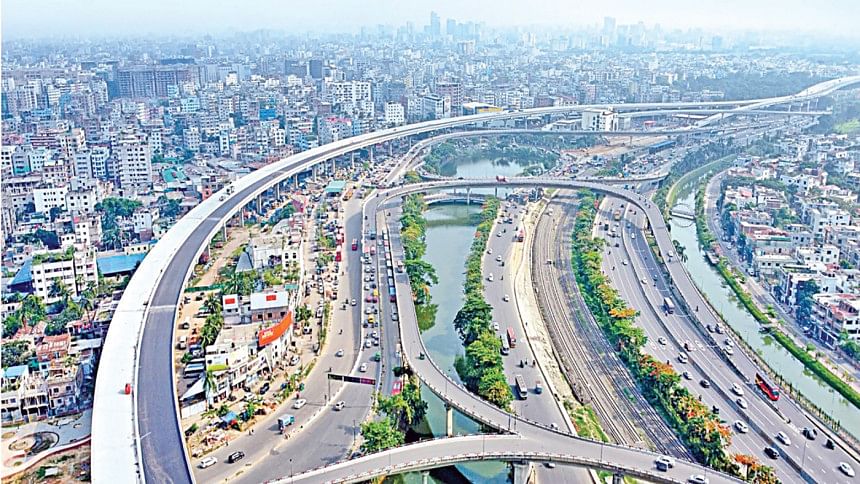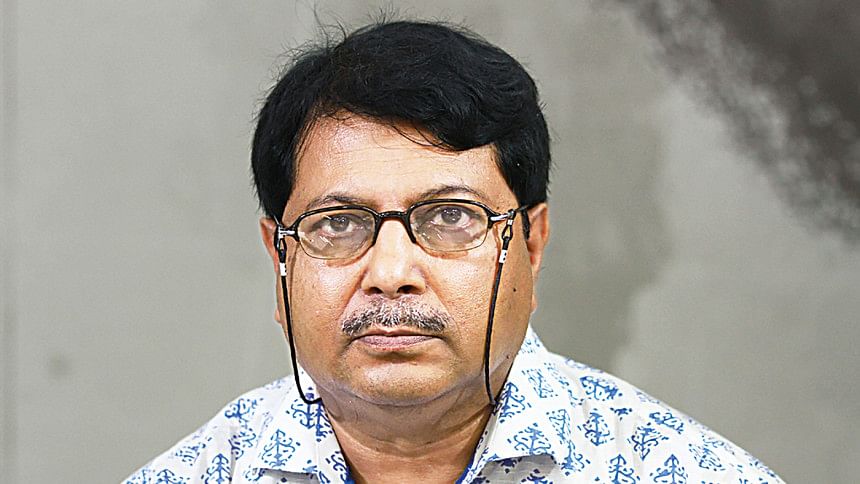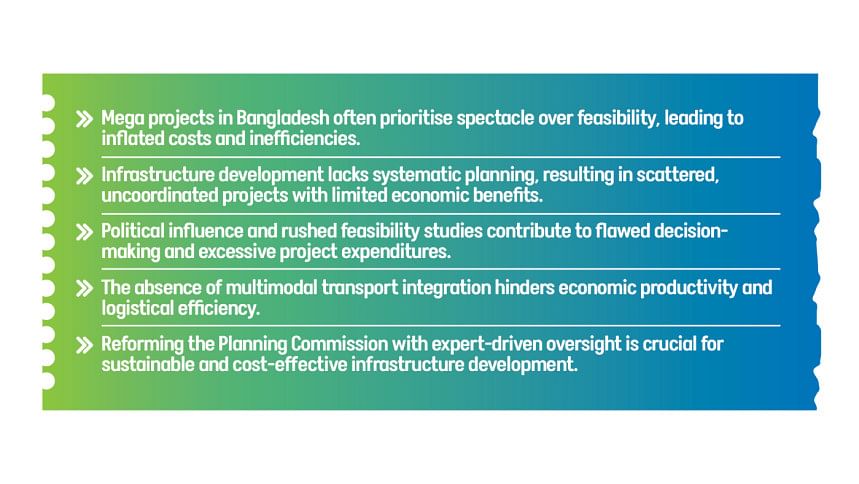Future-proofing our infrastructure

What have been the most significant trends in Bangladesh's infrastructure development over the last decades, and how do they reflect the country's priorities?
In Bangladesh, especially during the last 15 years, we have seen a certain trend in infrastructure development projects. The pattern has been to first present some achievements or, as I would call them, spectacles. If the word "mega" is attached to a project, it greatly supports the government's body language—it creates an illusion for the people. This was a common trend. However, if such projects were approached with genuine feasibility studies, many of them wouldn't have been deemed feasible.

What are the implications of such an approach to project feasibility and planning?
In most countries, development is planned systematically. Each department has its masterplan, which follows a sequence. This sequence ensures that when one project follows another, it contributes to the country's overall development holistically and creates opportunities for the people. These projects function as a moral commitment. They are like pieces of a jigsaw puzzle—at first, they may seem random, but they form a complete picture over time. This is how synergy is achieved, and productivity increases.
Globally, this is the philosophy behind infrastructure planning. However, over the past 15 years, many large-scale projects in Bangladesh were often driven by personal enthusiasm. Influential ministers, secretaries, donor agencies, or international individuals promoting government-to-government (G2G) funding frameworks would sell a concept. These individuals would present it to the prime minister (PM) in such a lucrative manner that the PM would agree to it, finding it appealing and feasible. Consequently, the project would become a PM-committed initiative.
Once a project became a PM-committed one, it carried a sort of immunity. People believed it faced no obstacles, no resistance, and that it would never be audited. The departments involved were often unaware of the project's details. After the PM's concurrence, the project would be rapidly implemented, bypassing traditional bottom-up planning processes in favour of a top-down approach. This led to rushed feasibility studies—more of a formality than a genuine analysis.
Could you elaborate on the challenges related to feasibility studies and project costs?
A feasibility study is a legal document that serves as the basis for funding and determines the project's viability. However, because of the rush, these studies were often conducted casually, with overly ambitious objectives added to make the project appear feasible. Whether these objectives were achievable or not was rarely questioned. Instead, these ambitious objectives served as talking points for political leaders in speeches, making them appear appealing to the public.
To ensure feasibility, the benefits were inflated while costs were minimised. This formal report would then be submitted, leading to the Development Project Proposal (DPP). The DPP would include various unethical benefits for those involved in decision-making and implementation. Globally, such practices fall outside the scope of good governance. For example, the transfer of technology, overseas business-class travel, or excessive allowances for meetings and conferences were added to the budget. These benefits encouraged many people, even those not directly involved in the project, to participate.
This created a conflict of interest—those responsible for approving and implementing the projects were also beneficiaries. As a result, project costs became astronomical. In G2G projects, conditions were often imposed to favour contractors or consultants from the lending country, bypassing open tender processes. This led to syndicated, closed bidding, further inflating project costs. Although G2G loans appeared to have low-interest rates and long grace periods, the lack of competitive bidding made the projects disproportionately expensive.

What are your thoughts on the current state of infrastructure integration in Bangladesh?
If we consider the overall state of Bangladesh's infrastructure—roads, highways, bridges, etc—most of these projects have been built in an uncoordinated manner. They are scattered, leading to outcomes that fail to meet expected returns. Most of these projects are passenger-centric rather than freight-centric, despite economic development being a stated objective. For example, while rail projects often mention freight objectives, rolling stock was not purchased to support freight transport.
In general, our infrastructure projects are urban-centric and designed to encourage private vehicles rather than public transport. Flyover projects in cities like Dhaka, Chattogram, and Rajshahi were built with the intention of reducing congestion but have instead increased it. Sustainable urban transport systems, such as mass transit, were largely neglected except for the MRT (Metro Rail Transit) project.
The lack of focus on freight movement undermines economic sustainability. Logistics chains for cargo and freight, essential for supporting a strong economy, remain undeveloped. Similarly, passenger mobility through mass transit systems remains inadequate. As a result, the overall impact of these projects has not been as significant for the economy or the public as it should have been. While the number and size of projects have increased, they are not integrated.
How does the lack of multimodal infrastructure impact development?
Globally, multimodal frameworks integrate different transport modes—rail, road, river, and civil aviation. Transfer hubs are established where one mode of transport seamlessly connects to another. For example, a passenger might travel by river to a hub and then switch to a train. Freight can also shift modes efficiently. This integration creates synergy, multiplying productivity and utility. Unfortunately, this kind of integration is almost non-existent in Bangladesh.

What reforms would you suggest to address these transportation challenges?
A lack of integration has led to inefficiencies and conflicts. For example, low-height bridges over rivers have rendered waterways non-functional. Similarly, uncoordinated projects, such as the third and fourth railway tracks, have created congestion by clashing with existing road infrastructure. These conflicts reduce productivity rather than enhancing it.
To address these issues, a comprehensive and reform-oriented approach is essential. One key recommendation is to reform the Planning Commission. Currently, the Planning Commission approves projects, but individual departments work in isolation without knowing how their projects might conflict with others. The commission should include visionary individuals with domain knowledge who can ensure integration and long-term planning. Globally, such commissions are staffed with renowned planners and experts who provide decision support to harmonise projects.
For example, when the Metro Rail Line 1 was approved, the project for the 300-feet road was also approved. However, the two projects are now in conflict because the metro authorities need to demolish parts of the road to proceed. This conflict could have been avoided if the Planning Commission had ensured coordination from the outset.
Additionally, the commission suffers from frequent staff rotations and a lack of retention of institutional knowledge. Officials often lack expertise in complex areas like transportation planning. Reforming the Planning Commission to align with global best practices is crucial. For instance, countries like the USA, Japan, and European nations have integrated Research and Development (R&D) units within their planning commissions.
What steps should we take to improve overall infrastructure development?
Looking ahead, Bangladesh needs to adopt innovative, integrated, and land-efficient approaches to infrastructure development. Globally, countries are building multiple projects within a single corridor. For example, a single land acquisition might support a road, an expressway, and a metro line, all stacked vertically. This approach conserves land, which is critical for Bangladesh, given its high population density and limited land resources.
The government must prioritise planning reforms to maximise utility and return on investment. Otherwise, the current approach of scattered and uncoordinated projects will continue to waste resources. Reforming the Planning Commission to include think tanks and domain experts is a critical first step. Such reforms can ensure that future projects are sustainable, cost-effective, and aligned with national priorities.
If these reforms are not implemented, the future of infrastructure development in Bangladesh will remain at risk. The country's limited land resources cannot support a wasteful and uncoordinated approach to development. Integrating projects, conserving land, and adopting global best practices are essential to ensuring that Bangladesh can meet its development goals effectively.

 For all latest news, follow The Daily Star's Google News channel.
For all latest news, follow The Daily Star's Google News channel. 



Comments